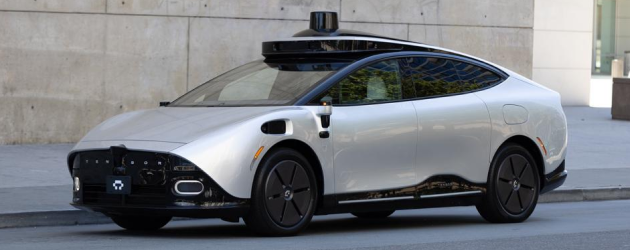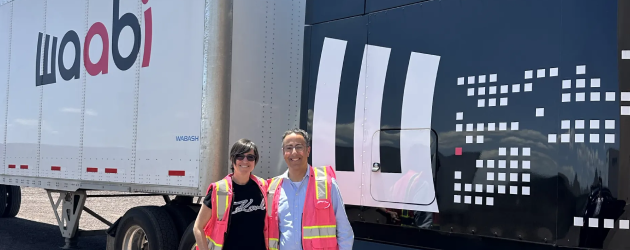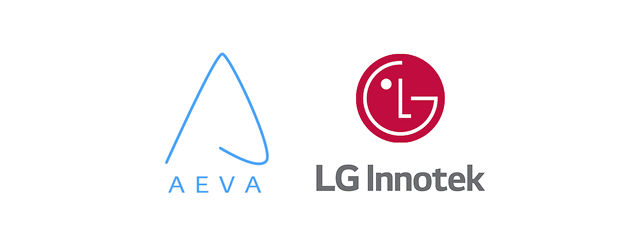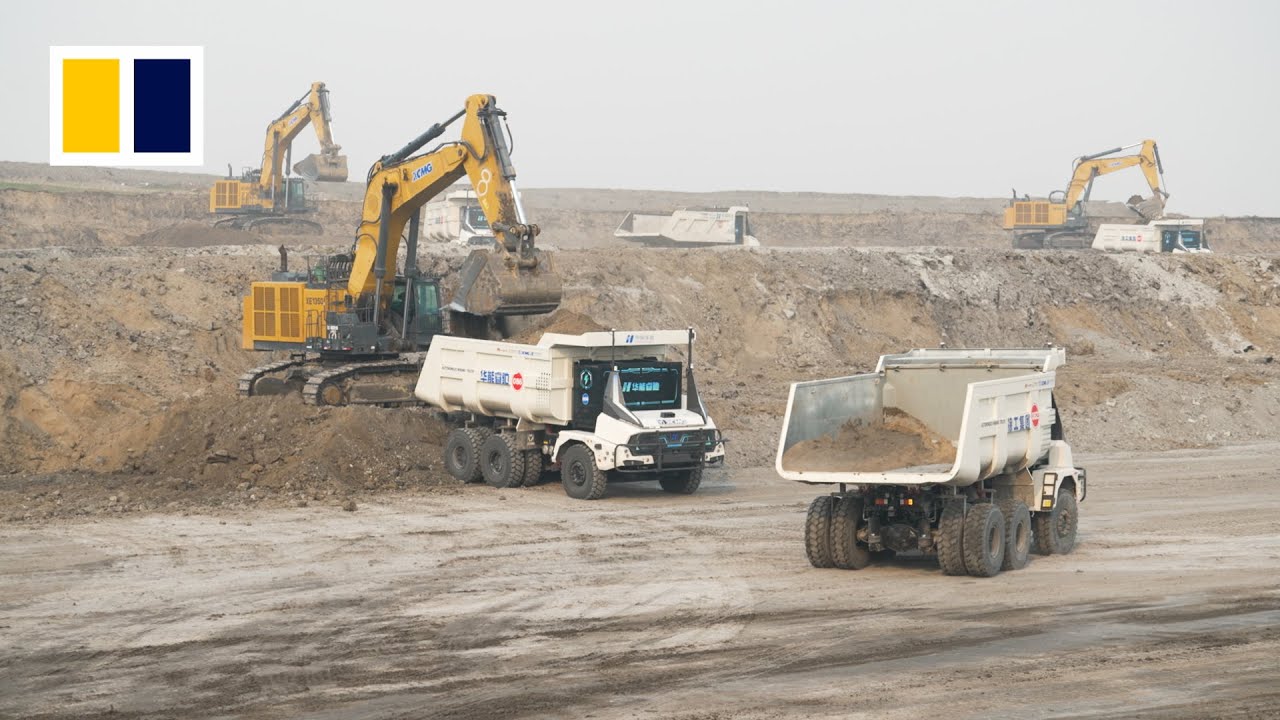
Vol. 244 | 2025.08.19
| Category | Company | Article |
|---|---|---|
| Self-driving | Tensor | Robocar startup Tensor unveils luxury self-driving car for 2026 |
| Self-driving | GM | GM revives autonomous vehicle program with focus on personal-use cars |
| Autonomous trucking | Waabi | Uber Freight CEO joins self-driving truck company Waabi, says era of autonomous big rigs on U.S. roads is here |
| LiDAR | Aeva, LG Innotek | Will Aeva’s $50M LG Innotek alliance fast-track multi-sector growth? |
| LiDAR | Orbbec | Orbbec debuts industry-first multi-pattern 3D LiDAR at World Robot Conference 2025 |

Robocar startup Tensor unveils
luxury self-driving car for 2026

📌 Tensor is shifting from robotaxi roots to deliver a high-end personal autonomous EV with heavy sensor integration and privacy-focused design.
-
Tensor aims to launch the first consumer-available “eyes-off” autonomous EV with a foldable steering wheel replaced by a display.
-
Tensor plans to launch the ‘Eyes-off’ personal autonomous electric vehicle, which replaces the steering wheel with a display, in the United States, Europe, and the Middle East in 2026.
-
The vehicle integrates 37 cameras, 5 custom LiDARs, 11 radars, and multiple other sensors, most of which have built-in cleaning systems.
-
It is designed for personal use rather than for robotaxi service, targeting highways and arterials in non-snowy regions at launch.
-
The vehicle operates without Cloud dependency, emphasizing privacy and data security.
-
The company evolved from AutoX, which previously ran a large robotaxi fleet in China but faced U.S. safety controversies.
-
It utilizes a modular ML-based software stack with a proprietary transformer model for autonomy.
-
Pricing will exceed that of current luxury EVs without self-driving, but details remain undisclosed.

GM revives autonomous vehicle program
with focus on personal-use cars

📌 GM is pivoting from robotaxis to personal autonomous vehicles, reinforcing its autonomy strategy with LiDAR testing and industry-leading hires.
-
GM is reviving its autonomous driving program by rehiring former Cruise employees and hiring new talent, led by ex-Tesla Autopilot chief Sterling Anderson.
-
The focus is shifting from robotaxi services to personal-use autonomous vehicles with hands-free, eyes-free capability.
-
GM is testing LiDAR-equipped, human-driven vehicles to collect data and enhance simulation models for autonomy development.
-
GM is continuing the development of Super Cruise as part of its autonomy roadmap.
-
Previous mid-decade launch targets for personal AVs have lapsed, but development remains a strategic priority.
-
The company remains committed to eventual fully driverless vehicles, despite shutting down Cruise after safety and regulatory issues.
-
CEO Mary Barra emphasizes that autonomous technology is critical to GM’s future product lineup.

Uber Freight CEO joins
self-driving truck company Waabi,
says era of autonomous big rigs
on U.S. roads is here

📌 Waabi is rapidly advancing autonomous trucking with plans for fully driverless operations across the U.S., leveraging partnerships, technology, and regulatory momentum.
-
Lior Ron, founder and former CEO of Uber Freight, joins Waabi as COO to scale autonomous trucking operations.
-
Ron believes autonomous big rigs are ready for commercial deployment, transforming freight economics with driverless semi cabs.
-
Waabi plans fully driverless trucks in the U.S. Southwest by year-end, targeting Sun Belt routes with high freight volumes and minimal weather constraints.
-
The company aims to expand autonomous freight across North America within five years, leveraging partnerships with Uber Freight and OEMs like Volvo.
-
Autonomous trucks are expected to double operational hours, reduce costs, improve safety, and increase fuel efficiency, accelerating adoption in logistics and retail sectors.
-
Regulatory progress remains state-driven, but federal engagement is ongoing to enable faster deployment nationwide.
-
Waabi positions itself as a “physical AI” company with long-term goals beyond trucking, including robotaxis, warehouse, and humanoid robots.

Will Aeva’s $50M LG Innotek alliance
fast-track multi-sector growth?

📌Aeva’s strategic partnership with LG Innotek enables scalable, cost-effective LiDAR deployment across automotive and industrial applications.
-
Aeva partnered with LG Innotek with a $50M collaboration to combine Aeva’s FMCW LiDAR technology with LG’s large-scale manufacturing capabilities.
-
LG Innotek invested $32M for a ~6% stake and will support production expansion, accelerating Aeva’s technology scale-up.
-
The initial focus is on LiDAR systems for passenger vehicles, with long-term plans for robotics, industrial automation, and consumer electronics.
-
Joint development aims to create a single-chip LiDAR system, improving affordability and integration for various devices.
-
Leveraging LG Innotek’s global manufacturing network enables rapid scaling while keeping unit costs competitive.
-
The partnership accelerates commercialization, transforming advanced sensing from niche applications into mainstream mobility and automation standards.
-
Overall, Aeva’s collaboration positions it to compete in high-volume LiDAR markets while expanding into multiple sectors.

Orbbec debuts industry-first multi-pattern
3D LiDAR at World Robot Conference 2025

📌 Pulsar ME450 offers a flexible, high-precision LiDAR solution for diverse robotics applications, advancing intelligent perception and autonomous capabilities.
-
Orbbec introduced the Pulsar ME450, the first dToF 3D LiDAR combining MEMS mirror and motorized scanning for flexible patterns.
-
The sensor supports dynamic multi-pattern scanning, switching seamlessly between non-repetitive, repetitive, and dense scanning modes.
-
Adjustable vertical field of view and rotation speed allow adaptation to various robotic applications like forklifts, logistics robots, and surveying equipment.
-
Pulsar ME450 delivers millimeter-level precision and stable performance across different materials and challenging environments.
-
The technology simplifies system integration, reduces total cost, and supports both navigation and detailed 3D reconstruction.
-
Orbbec leverages a comprehensive sensor portfolio including stereo vision, structured light, iToF, dToF, and LiDAR for advanced robotic perception.
-
Large-scale deployment in global robotics markets supports end-to-end “hand-eye-brain” integration and multi-sensor fusion for intelligent autonomous systems.
* Contents above are the opinion of ChatGPT, not an individual nor company


